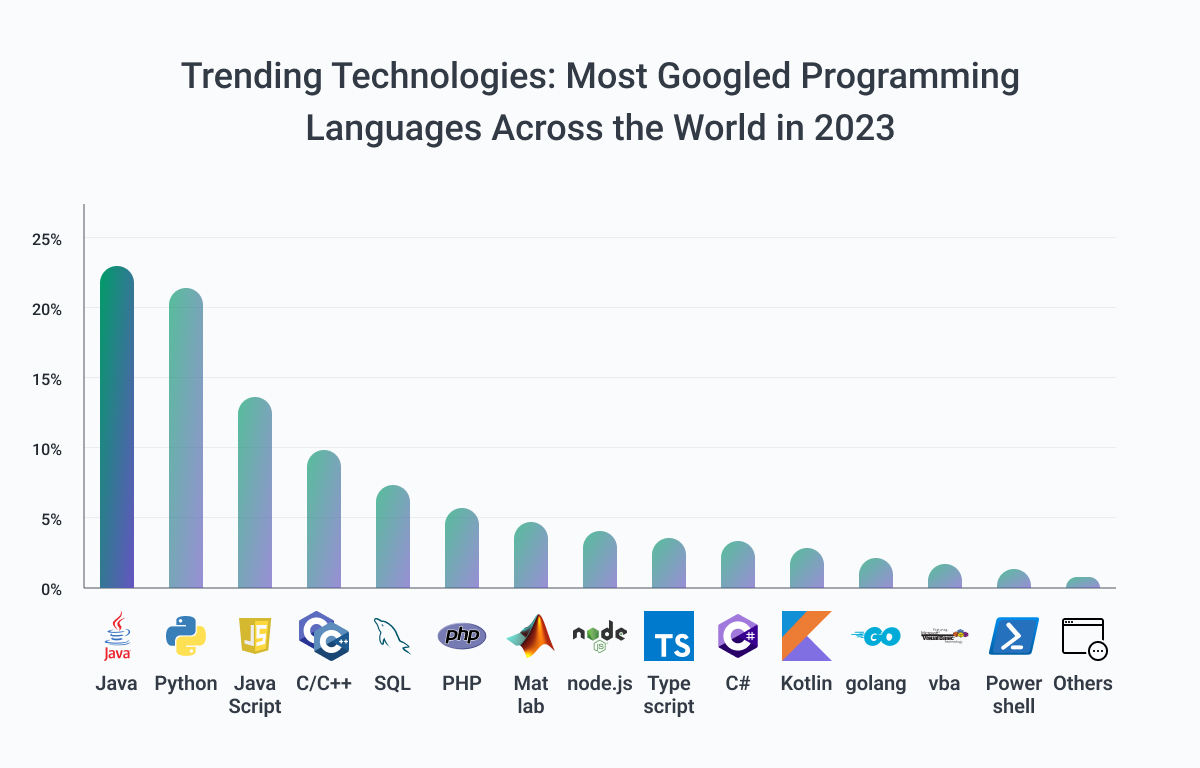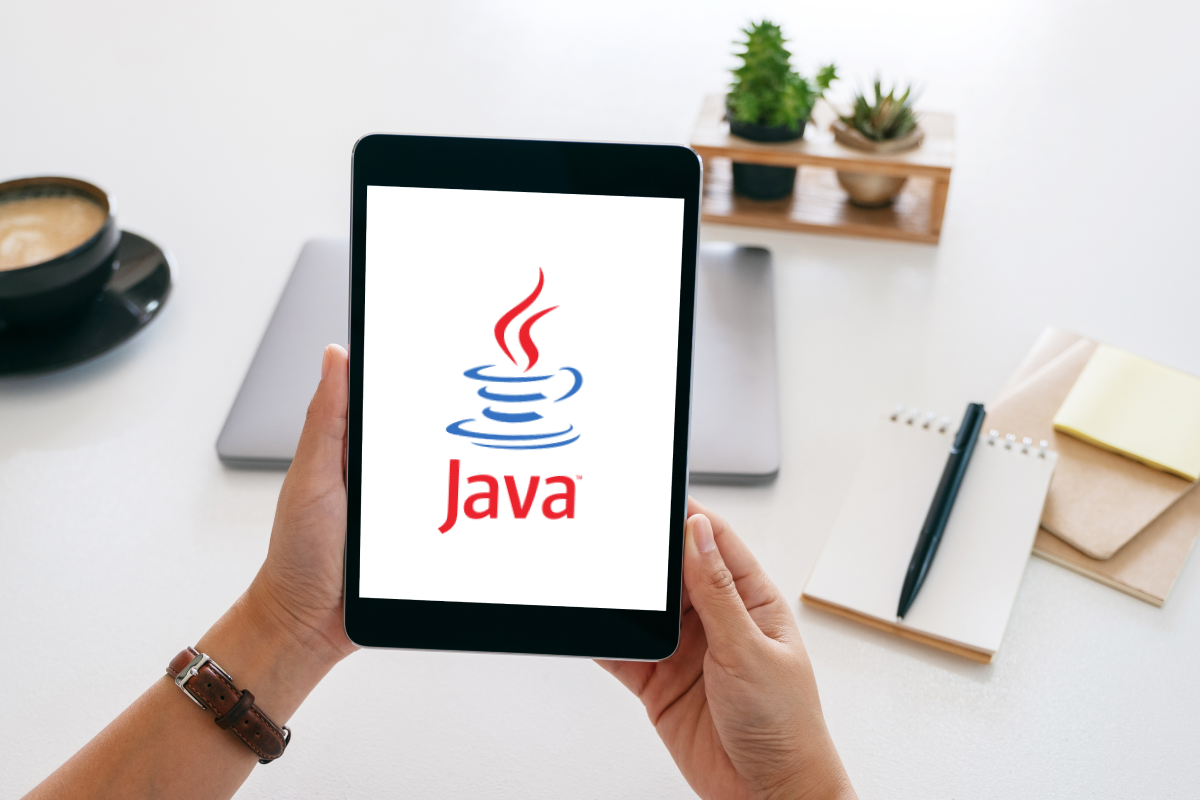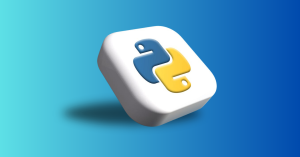Java has long been a favorite among software developers because of its platform neutrality, resilience, and diversity. As one of the most frequently used programming languages, Java has a rich ecosystem that serves a wide range of sectors, from web development to enterprise solutions.
According to Oracle, over 69% of full-time developers worldwide use Java, and 51 billion active Java Virtual Machines (JVMs) are deployed globally.

Java’s proficiency in graphical user interfaces (GUI) is exhibited through its dedicated frameworks, particularly in the context of Java Swing and other allied technologies.
Java in Software Development
The notion of “write once, run anywhere” has contributed to Java’s dominance in the software development scene. This means that Java applications are platform-independent, allowing them to run without change on various operating systems. Because of this cross-platform portability, Java has become a go-to language for developers looking to reach many users.
The Java GUI Framework
Java provides a broad set of tools and frameworks for GUI development, making it an excellent choice for designing visually beautiful and functional interfaces. Using Java GUI frameworks improves the development process by making creating interactive and responsive applications easier. These frameworks provide a variety of GUI elements, layout managers, and components that make it easier to design complicated user interfaces.
Choosing the right Java GUI framework is critical for developers looking to optimize their apps. Different frameworks have different features, performance levels, and usability. The appropriate option can substantially impact a project’s efficiency, scalability, and overall success.
Whether you are building desktop or web applications or integrating GUI elements into your Java projects, this article aims to guide you in selecting the most suitable framework for your needs.
Understanding Java GUI Frameworks
Java GUI frameworks are extensive collections of tools, libraries, and APIs that make creating intuitive and visually appealing user interfaces for Java applications easier. These frameworks are critical in easing the complex process of designing GUIs by providing developers with a standardized and efficient way to design and construct apps.
Several elements make up a Java GUI Framework.
Containers
- Containers hold and organize other elements. They provide a framework for arranging various interface components within the program window.
- Container classes in Java GUI frameworks, such as JFrame and JPanel, allow developers to define hierarchies and regulate the layout of their user interfaces.
Components
- Components are the building blocks of a graphical user interface. Examples are buttons, text fields, labels, and other interactive features with which users interact.
- Java GUI frameworks offer many pre-built components, making it easy for developers to include standard UI elements in their projects.
Layout Managers
- Layout managers specify how components should be organized within containers to ensure a consistent and visually appealing presentation.
- Various layout managers, such as BorderLayout and GridLayout, are available in Java GUI frameworks, allowing developers to create flexible and responsive user interfaces that adapt to varied screen sizes.
Event Handling
- The ability to capture and respond to user interactions is dependent on event handling. It entails recognizing and managing events like mouse movements and button clicks.
- Event-handling methods are built into Java GUI frameworks, allowing developers to correlate specific actions with user interactions, resulting in dynamic and responsive programs.
Graphics and Drawing
- Developers can use graphics and drawing skills to create bespoke visual elements, charts, or images within the GUI.
- Java GUI frameworks include APIs for drawing shapes, images, and text, allowing developers to improve the visual attractiveness of their programs.
Data Binding
- Data binding makes it easier to synchronize the user interface with the underlying data model.
- Data binding technologies are frequently included in Java GUI frameworks, allowing developers to connect UI components directly to data sources, assuring seamless updates and consistency.
Resource Management
- Resource management entails efficiently processing and arranging external resources such as graphics, typefaces, and configuration files.
- Java GUI frameworks provide resource management utilities, allowing programs to access and use external assets easily.
Internationalization and Localization
- International and localization applications can adapt to diverse languages and cultural preferences.
- Java GUI frameworks provide tools for managing text, date formats, and other locale-specific aspects, improving program global usability.
All of these elements work hand-in-hand to make up the Java GUI Framework.
Containers lay the structural groundwork, organizing UI components for a unified layout. Components provide a wide range of interactive elements, making integrating standard UI features for a user-friendly interface easier. Layout Managers guarantee that the design is consistent and responsive across multiple devices and screen sizes.
Event handling technologies improve user engagement, allowing developers to build dynamic and responsive programs. Graphics and drawing capabilities provide the freedom to create visually appealing items. Data binding allows smooth synchronization between the user interface and the underlying data model.
Resource management improves performance by handling external assets efficiently. Finally, internationalization and localization help to expand the app’s worldwide reach by accepting different languages and cultural preferences for a more inclusive user experience.
Benefits of using Java GUI Frameworks
Java GUI frameworks provide numerous benefits, considerably improving both the development process and the user experience of applications. One significant advantage is the potential of GUI frameworks to promote better user interface design. These frameworks enable developers to construct visually appealing and consistent user interfaces by providing pre-built components, styles, and themes. This consistency helps maintain a polished and professional appearance and creates a seamless and harmonized user experience.
Furthermore, the adoption of GUI frameworks streamlines and improves the development process. Developers can leverage pre-existing components with a structured collection of tools and frameworks, avoiding the requirement to build anything from scratch. This efficiency shortens development timelines, allowing for the rapid creation of powerful apps. Furthermore, GUI frameworks abstract complicated tasks, allowing developers to concentrate on the logic of the program rather than the technical details of UI implementation. This abstraction reduces coding processes, making development more straightforward and manageable.
The advantages go beyond convenience and efficiency to include speedier application deployment. Developers can shorten the development cycle by exploiting the features of GUI frameworks, resulting in faster releases and upgrades. This not only keeps programs competitive but also keeps them up-to-date and responsive to changing user needs. In terms of money, the efficiency and speed obtained by using GUI frameworks translate into cost savings. Organizations can better allocate resources as developers offer high-quality applications in less time.
Java GUI frameworks help to maintain the platform’s natural cross-platform interoperability. Applications created using these frameworks can run on various operating systems without change. This cross-platform functionality extends applications’ reach, allowing them to connect with a larger audience and optimize their impact.
Finally, the improved user experience enabled by GUI frameworks, via consistent layouts and responsive design features, increases user satisfaction and engagement. In summary, Java GUI frameworks are a valuable asset for Java developers, providing a comprehensive collection of tools that optimize both the development process and the end-user experience.
Top Java GUI Frameworks
The table below provides a quick overview of the top Java GUI frameworks, including their primary uses, strengths, drawbacks, and distinguishing features. Each framework serves a particular purpose, and understanding its strengths can help developers choose the best one for their projects.
| Framework | Main Application | Strengths | Weaknesses | Best Features |
| JavaFX | Rich Desktop Applications, Enterprise Solutions | Modern UI, Excellent Graphics Support, FXML for UI Design | Learning Curve, Limited Built-in Components | CSS Styling, Scene Builder Integration |
| Swing | Desktop Applications, Applets | Mature and Stable, Extensive Documentation, Look and Feel Customization | Can be Resource-Intensive, Older Look and Feel | Pluggable Look and Feel, Lightweight Components |
| AWT | Desktop Applications, Applets | Simple and Lightweight, Integration with Native Platform | Limited GUI Components, Less Flexibility | Platform Independence, Direct Access to Native Components |
| SWT | Rich Client Applications, Desktop Applications | Native Widget Integration, High Performance | Platform-Specific Code, Smaller Community | Native Look and Feel, Efficient Resource Utilization |
We will discuss each of these and some other options in more detail below.
JavaFX
- Main Application: Rich Desktop Applications, Enterprise Solutions
- Features and Functions: Modern UI, Graphics Support, FXML for UI Design

Video Source- JavaFX Introduction
- Strengths: Excellent graphics capabilities, FXML for declarative UI, CSS styling, integration with Scene Builder
- Limitations: Learning curve for complex applications, limited built-in components
- Best Use Cases: Applications requiring modern and visually appealing interfaces, enterprise solutions with rich user experiences.
Swing
- Main Application: Desktop Applications, Applets
- Features and Functions: Mature and stable, extensive documentation, customizable look and feel

- Strengths: Mature and well-established, extensive community support, pluggable look and feel
- Limitations: Can be resource-intensive for complex UIs, may exhibit an older look and feel
- Best Use Cases: Cross-platform desktop applications requiring a high level of customization.
AWT (Abstract Window Toolkit)
- Main Application: Desktop Applications, Applets
- Features and Functions: Simple and lightweight, integration with native platform components
- Strengths: Platform independence, direct access to native components
- Limitations: Limited set of GUI components, less flexibility compared to Swing or JavaFX
- Best Use Cases: Lightweight applications and projects requiring straightforward GUI elements.
SWT (Standard Widget Toolkit)
- Main Application: Rich Client Applications, Desktop Applications
- Features and Functions: Native widget integration, high performance
- Strengths: Efficient resource utilization, native look and feel, direct access to native components
- Limitations: Platform-specific code required, smaller community compared to Swing
- Best Use Cases: Desktop applications where native integration and high performance are critical.
Grails
- Main Application: Web Applications
- Features and Functions: Groovy-based, convention over configuration, seamless integration with Java libraries
- Strengths: Rapid development, built-in support for ORM (Object-Relational Mapping), testing-friendly environment

Video Source- Grails and Groovy introduction
- Limitations: Learning curve for developers unfamiliar with Groovy, may not be suitable for highly complex enterprise applications
- Best Use Cases: Agile web application development, projects where convention over configuration is preferred.
GWT (Google Web Toolkit)
- Main Application: Web Applications
- Features and Functions: Java-to-JavaScript compilation, rich set of widgets, AJAX support
- Strengths: Write Java code, compile to JavaScript, seamless integration with Java libraries
- Limitations: Steeper learning curve for complex applications, compilation time can be lengthy
- Best Use Cases: Web applications requiring Java-based development, projects with a focus on code reusability.
Apache Pivot
- Main Application: Rich Client Applications, Desktop Applications
- Features and Functions: Native widget integration, XML-based markup language for UI, WTKX scripting
- Strengths: High performance, native look and feel efficient resource utilization
- Limitations: Smaller community compared to Swing and JavaFX, platform-specific code in some instances
- Best Use Cases: Enterprise desktop applications, applications where native integration is crucial.
Understanding the unique features, strengths, and limitations of these popular Java GUI frameworks is essential for developers to make informed decisions based on the specific requirements of their projects. Each framework has its niche and caters to different aspects of Java GUI development.
The video presents additional detail on the solution discussed above.

Choosing the right Java GUI Framework
Choosing the best Java GUI framework is a key decision that substantially impacts the success of a software project. This decision is critical since it directly impacts the application’s functionality, user experience, and long-term maintainability. To make an informed decision, developers should carefully evaluate numerous important factors adapted to the specific requirements of their project.
Project Requirements
Align the framework selection with the project’s specific requirements. Consider whether the program is for a desktop, online, or mobile platform and whether it requires complicated graphics, multimedia, or real-time updates.
Customizability
Determine the framework’s level of customizability. Some projects may have a highly customized user interface, so the ability to alter components, styles, and layouts becomes critical.
Performance
Examine each framework’s performance qualities. Performance factors may include rendering speed, resource utilization, and responsiveness, depending on the nature of the program.
Ease of Use
Consider usability, especially if the development team includes people with diverse degrees of experience. A framework with intuitive APIs, good documentation, and a low learning curve might help to accelerate development while minimizing potential issues.
Community and Support
Examine the framework’s community size and activity. A thriving and engaged community typically suggests continued support, regular updates, and a wealth of shared information. It can be useful in troubleshooting and overcoming obstacles.
Integration Capabilities
Examine the framework’s compatibility with other tools, libraries, and technologies. Seamless integration can boost productivity and enable developers to tap into a larger network of resources.
Trendiness
While not the only aspect, a framework’s popularity and trendiness can provide insights into its current relevance and adoption among the development community. Consider the framework’s trajectory and whether it corresponds to long-term project objectives.
Summary
The article has highlighted the significance of choosing the proper Java GUI framework for successful software development. Key points to consider include understanding project requirements, customizability, performance, ease of use, community support, integration capabilities, and trendiness.
It is paramount for developers to conduct thorough research and testing before committing to a framework. This ensures that the chosen framework aligns seamlessly with the project’s goals and technical requirements. Investing time in this decision-making process pays dividends for a more efficient development lifecycle and a robust end product.
Moreover, it is advisable to bring on board developers with expertise in using Java GUI frameworks for optimal project success. Their experience and proficiency can navigate the intricacies of these frameworks, ensuring a smoother development journey.
Consider partnering with ParallelStaff, a leading nearshore software development service provider, as an additional resource. ParallelStaff offers a pool of talented software developers who bring diverse skills and expertise. This collaboration ensures access to a skilled workforce and proves to be cost-efficient, delivering quality results within budget constraints.
For further inquiries or collaboration opportunities, please don’t hesitate to contact ParallelStaff. Visit our website or reach out to us. Your journey to successful software development begins with the right expertise and collaboration, and ParallelStaff is here to support your endeavors.
FAQ
-
Is Java Swing still utilized today?
Yes, Java Swing is still used in a variety of projects. While newer frameworks such as JavaFX have grown in favor, Swing remains a solid and mature option for desktop applications. Its dependability and thorough documentation make it popular for various development scenarios.
- Is JavaFX better than Swing?
Project requirements drive the decision between JavaFX and Swing. JavaFX provides current user interface capabilities, improved graphics support, and FXML for UI design. On the other hand, Swing is more established, steady, and has a larger community. The decision should be based on the project’s specific needs and the development team’s experience.
- What is the most modern Java GUI framework?
JavaFX is regarded as one of the most recent Java GUI frameworks. It includes a modern user interface, graphics capability, and FXML for declarative UI design. Its architecture lends itself to developing visually appealing apps with a modern appearance and feel.
- How many Java GUI Frameworks are there?
There are various Java GUI frameworks available to meet a variety of requirements. JavaFX, Swing, Apache Pivot, AWT, SWT, and GWT are a few examples. The project needs, platform, and application particular functionalities determine the choice.
- Can we use more than one Java GUI Framework for our project?
While using more than one Java GUI framework in a project is theoretically conceivable, it is generally not advised. Combining frameworks may result in integration complications, maintenance challenges, and longer learning curves for the development team. For consistency and efficiency, it is best to select the most appropriate framework based on project requirements and stick with it.






